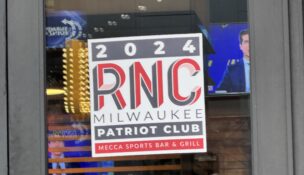Shareholder claim survives
By: dmc-admin//May 4, 2009//
A minority shareholder who is frozen out of a corporation can seek broad equitable remedies for oppression in an action for dissolution.
However, he cannot bring a direct action for loss of corporate opportunities.
On April 29, a divided Wisconsin Supreme Court ruled in favor of the majority shareholders on one claim, and the minority shareholder on two others.
However, how these holdings will affect the remedies available, should the minority shareholder prevail, poses an interesting question.
An appraisal action over the same conduct is currently pending in federal court, prompting Justice Patience Drake Roggensack to ponder in a concurrence: “Why [the plaintiff] would choose to continue with his claim for dissolution is a mystery to me.
However, until fair value is determined by the United States District Court, I will go along with the majority opinion’s decision to permit [the] claim for dissolution to proceed.”
Edward U. Notz was a minority shareholder in Albert Trostel & Sons Co. (ATS), originally a tannery, but now a diversified corporation with interests and subsidiaries in plastics, among other industries.
According to Notz, ATS looked into acquiring Dickten & Masch (D&M), a competing plastics business, but chose not to. Instead, Everett Smith Group Ltd. (ATS’s majority shareholder) bought D&M; the Smith group then bought ATS’s plastics subsidiary from ATS.
Notz brought suit against the Smith Group, alleging breach of fiduciary duty, and requesting judicial dissolution based on oppressive conduct.
The circuit court dismissed the breach of fiduciary duty claims, finding that the injuries claimed were common to all shareholders, but allowed the dissolution claim based on oppression to go forward.
The Court of Appeals granted leave to appeal, but while the appeal was pending, ATS initiated a cash-out merger, terminating Notz’ status as a shareholder.
The Court of Appeals then affirmed the dismissal of the breach of fiduciary duty claim, but carved out a portion of the claim. The court concluded that the money ATS spent performing due diligence into whether it should buy D&M benefited only the Smith Group, and this part of the suit could go forward.
The court also held that once Notz ceased to be a shareholder, he no longer had standing to pursue the dissolution claim, and directed the circuit court to dismiss that claim. Notz v. Everett Smith Group, Ltd., 2008AP 84, 312 Wis.2d 636, 754 N.W.2d 235.
The Supreme Court accepted review, and affirmed in part, and reversed in part, in an opinion by Justice N. Patrick Crooks.
Fiduciary Duty
First, the Supreme Court held that the fiduciary duty claim based on the Smith Group’s acquisition of ATS’s plastics subsidiary was properly dismissed.
Although Notz alleged self-dealing by the majority in passing up the opportunity to buy D&M, and then selling the plastics subsidiary to themselves, the court agreed with the Smith Group that any injury alleged was to the corporation itself, rather than Notz.
As a result, Notz could only bring a derivative claim against the majority, rather than a direct claim.
Due Diligence
The court also agreed with the Court of Appeals that Notz could bring a direct claim for breach of fiduciary duty based on ATS’s payment of expenses for the never-consummated acquisition of D&M.
“Cash that was part of the corporation’s assets which could have been used to pay dividends was instead diverted to fund due diligence for a company that the majority shareholder later acquired [for itself],” Crooks wrote.
Dissolution
However, the Supreme Court reversed the Court of Appeals’ holding that the merger extinguished Notz’s dissolution claim.
Section 180.1106(1)(d) states “a civil … proceeding pending … against any business entity that is a party to the merger may be continued as if the merger did not occur …”
The court found this provision explicitly preserves Notz’s claim for dissolution.
The court also noted that other states that have adopted the Model Business Corporation Act have agreed. In Yanow v. Teal Indus., 422 A.2d 311 (Conn.1979), the Connecticut Supreme Court interpreted the provision to preserve claims by dissenting shareholders. Looking to Delaware law, the court noted that although a merger is generally fatal to a derivative claim, an exception is allowed where the merger is “perpetrated merely to deprive shareholders of the standing to bring a derivative action.”
The majority court concluded that the Notz’s dissolution action fit within this exception, and reversed the Court of Appeals on this issue.
Dissent
Besides Justice Roggensack’s concurrence, which was joined by Justice Michael J., Gableman, the case also produced a dissent by Justice Ann Walsh Bradley and joined by Chief Justice Shirley S. Abrahamson.
The dissenters concluded that the breach of fiduciary duty claim that the majority rejected is a direct claim and should be allowed to proceed.
“The only true distinction I see between Notz’s two claims is that a dollar value is more easily assigned to the claim for the due diligence expenditure,” Bradley wrote. “This is not a distinction that is relevant in determining whether the injury was primarily to the shareholder or to the corporation.”
Case analysis
Despite the court’s rejection of the breach of fiduciary duty claims, that holding does not limit the remedies available to minority shareholders.
If a minority shareholder prevails on a dissolution claim (thus proving oppression), the court has broad equitable powers to order whatever remedy is appropriate.
In this case, that would include the value of Notz’s shares, had the majority shareholders purchased D&M for the corporation rather than themselves.
The interesting question is whether Justice Roggensack is correct in the assumption that there is no reason for the state law case to continue apart from the appraisal action pending in federal court.
Roggensack wrote in her concurrence that, “the most that can result from Notz’s dissolution claim is a determination of the fair value of Notz’s former shares in ATS.”
Roggensack notes though that, pursuant to HMO-W Inc. v. SSM Health Care Sys., 2000 WI 46, 234 Wis.2d 707, 611 n.W.2d 250, unfair dealing by the majority is relevant to the fair market value of the minority shareholder’s shares.
Thus, the federal court is not limited to awarding the value of the shares on the date of the merger, but can consider what the shares would have been worth had ATS bought D&M.
Presumably, though, the plaintiff has a valid reason for continuing to pursue the state court action.
Under sec. 180.1833(1)(a)11, a court in a dissolution action has power to “Award[] damages to any aggrieved party in addition
to, or in lieu of, any other relief granted.”
According to footnote 24 of the court’s opinion, Notz is seeking punitive damages in his amended complaint as part of his dissolution claim.
Should the plaintiff prevail on the allegations in his dissolution claim, this case may return to the Supreme Court over the remedies available to him.
Legal News
- Survey: Harris has enough delegates to be nominee
- Outside the RNC, small Milwaukee businesses and their regulars tried to salvage a sluggish week
- Biden called to resign immediately after the president announces he won’t seek reelection
- Biden drops out of 2024 presidential race, endorses Harris
- Local PA cops allegedly thought Trump’s would-be assassin was Secret Service
- Biden-Lead Secret Service admits agency denied past requests by Trump’s campaign for tighter security
- Class action filed against Walgreens
- Former Waukesha County Sheriff’s Office lieutenant pleads guilty to smuggling contraband
- Two dead, one injured after Ozaukee County water rescue
- RNC Final Day: Trump accepts GOP Nomination
- Wisconsin officials intervene in Planned Parenthood action
- 7th Circuit adopts modifications to Rules 31, 34, 40, 47 and 60
Case Digests
- Ineffective Assistance of Counsel; Double Jeopardy; Sentencing
- Ineffective Assistance of Counsel; Sexual Assault-Prosecutorial Misconduct
- Contract-Negligence
- Criminal Law; Juvenile Law; Discovery
- Family Law; Child Support; Property Division First paragraph(s)
- Ineffective Assistance of Counsel- Exclusion of Evidence of Witness Bias
- Postconviction Relief-Sentencing-Ineffective Assistance of Counsel
- 14th Amendment – Due Process
- Criminal-Sentencing Guidelines – Enhancement
- Bankruptcy-Tax
- Civil Rights – 14th Amendment-Jury Instructions
- Contract; Foreclosure and Property











